[1]Trinka E, Cock H, Hesdorffer D, et al. A definition and classification of status epilepticus-Report of the ILAE Task Force on Classification of Status Epilepticus[J].Epilepsia, 2015, 56(10): 1515-1523.
查看更多
[2]National Clinical Guideline Centre (UK).The Epilepsies: The Diagnosis and Management of the Epilepsies in Adults and Children in Primary and Secondary Care. London: Royal College of Physicians (UK). January 2012.
[3]Brophy GM, Bell R, Claassen J, et al. Guidelines for the evaluation and management of status epilepticus[J].Neurocrit Care, 2012, 17(1): 3-23.
[4]Gaspard N, Hirsch LJ, Sculier C, et al. New-onset refractory status epilepticus (NORSE) and febrile infection-related epilepsy syndrome (FIRES): State of the art and perspectives[J].Epilepsia, 2018, 59(4): 745-752.
[5]Fisher RS, Acevedo C, Arzimanoglou A, et al. ILAE official report: a practical clinical definition of epilepsy[J].Epilepsia, 2014, 55(4): 475-482.
[6]Shorvon S. Super-refractory status epilepticus: an approach to therapy in this difficult clinical situation[J].Epilepsia, 2011, 52 Suppl 8: 53-56.
[7]Meziane-Tani A, Foreman B, Mizrahi MA. Status Epilepticus: Work-Up and Management in Adults[J].Semin Neurol, 2020, 40(6): 652-660.
[8]Johnson EL, Kaplan PW. Status Epilepticus: Definition, Classification, Pathophysiology, and Epidemiology[J].Semin Neurol, 2020, 40(6): 647-651.
[9]Ding D, Zhou D, Sander JW, et al. Epilepsy in China: major progress in the past two decades[J].Lancet Neurol, 2021, 20(4): 316-326.
[10]Lu L, Xiong W, Yang X, et al. In-hospital mortality of status epilepticus in China: Results from a nationwide survey[J].Seizure, 2020, 75: 96-100.
[11]Kantanen AM, Reinikainen M, Parviainen I, et al. Incidence and mortality of super-refractory status epilepticus in adults[J]. Epilepsy Behav, 2015, 49:131-134.
[12]Strzelczyk A, Ansorge S, Hapfelmeier J, et al. Costs, length of stay, and mortality of super-refractory status epilepticus: a population-based study from Germany[J]. Epilepsia, 2017, 58(09): 1533-1541.
[13]Shorvon S, Sen A. What is status epilepticus and what do we know about its epidemiology?[J].Seizure, 2020, 75: 131-136.
[14]Legriel S, Azoulay E, Resche-Rigon M, et al. Functional outcome after convulsive status epilepticus[J].Crit Care Med, 2010, 38(12): 2295-2303.
[15]Leppik IE. Status epilepticus in the elderly[J].Epilepsia, 2018, 59 Suppl 2:140-143.
[16]Sutter R, Semmlack S, Kaplan PW. Nonconvulsive status epilepticus in adults - insights into the invisible[J].Nat Rev Neurol, 2016, 12(5): 281-293.
[17]Vasquez A, Farias-Moeller R, Tatum W. Pediatric refractory and super-refractory status epilepticus[J].Seizure, 2019, 68: 62-71.
[18]Chin RF, Neville BG, Peckham C, et al. Incidence, cause, and short-term outcome of convulsive status epilepticus in childhood: prospective population-based study[J].Lancet, 2006, 368(9531): 222-229.
[19]Guerrini R, Parrini E, Marini C, et al. What is the role of next generation sequencing in status epilepticus?[J].Epilepsy Behav, 2019, 101(Pt B): 106373.
[20]Rajiv KR, Radhakrishnan A. Status epilepticus in pregnancy_- Can we frame a uniform treatment protocol?[J].Epilepsy Behav, 2019, 101(Pt B): 106376.
[21]Chin RF, Neville BG, Scott RC. A systematic review of the epidemiology of status epilepticus[J].Eur J Neurol, 2004, 11(12): 800-810.
[22]Betjemann JP, Lowenstein DH. Status epilepticus in adults[J].Lancet Neurol, 2015, 14(6): 615-624.
[23]Barcia Aguilar C, Sánchez Fernández I, Loddenkemper T. Status Epilepticus--Work-Up and Management in Children[J].Semin Neurol, 2020,40(6): 661-674.
[24]Chen JW, Wasterlain CG. Status epilepticus: pathophysiology and management in adults[J].Lancet Neurol, 2006, 5(3): 246-256.
[25]Suchdev K, Kupsky WJ, Mittal S, et al. Histopathology of new-onset refractory status epilepticus (NORSE) in adults[J].Seizure, 2021, 93: 95-101.
[26]de VriesEE,van den MunckhofB,Braun KP,et al.Inflammatory mediators in human epilepsy: a systematic review and meta-analysis[J].Neurosci Biobehav Rev,2016,63:177-190.
[27]SakumaH,TanumaN,KukiI,et al.Intrathecal overproduction of proinflammatory cytokines and chemokines in febrile infection-related refractory status epilepticus[J].J Neurol Neurosurg Psychiatry,2015,86(7):820-822.
[28]Clarkson BDS,Lafrance-Corey RG,Kahoud RJ,et al.Functional deficiency in endogenous interleukin-1 receptor antagonist in patients with febrile infection-related epilepsy syndrome[J].Ann Neurol,2019, 85(4):526-537.
[29]Specchio N,Pietrafusa N.New-onset refractory status epilepticus and febrile infection-related epilepsy syndrome[J].Dev Med Child Neurol,2020,62(8):897-905.
[30]Craig DP, Mitchell TN, Thomas RH. A tiered strategy for investigating status epilepticus[J].Seizure, 2020, 75: 165-173.
[31]Beniczky S, Hirsch LJ, Kaplan PW, et al. Unified EEG terminology and criteria for nonconvulsive status epilepticus[J].Epilepsia, 2013, 54 Suppl 6: 28-29.
[32]Leitinger M, Trinka E, Gardella E, et al. Diagnostic accuracy of the Salzburg EEG criteria for non-convulsive status epilepticus: a retrospective study[J]. Lancet Neurol, 2016, 15(10): 1054-62.
[33]Sadeghi M, Eshraghi M, Akers KG, et al. Outcomes of status epilepticus and their predictors in the elderly-A systematic review[J].Seizure, 2020, 81: 210-221.
[34]Roberg LE, Monsson O, Kristensen SB, et al. Prediction of Long-term Survival After Status Epilepticus Using the ACD Score [published correction appears in JAMA Neurol. 2022 , 79(6): 634][J].JAMA Neurol, 2022, 79(6): 604-613.
[35]Sairanen JJ, Kantanen AM, Hyppölä HT, et al. Outcome of status epilepticus and the predictive value of the EMSE and STESS scores: A prospective study[J].Seizure, 2020, 75: 115-120.
[36]Leitinger M,Holler Y,Kalss G,et al.Epidemiology-Based Mortality Score in Status Epilepticus (EMSE)[J].Neurocrit Care,2015,22:273-282.
[37]Sutter R, Dittrich T, Semmlack S, et al. Acute Systemic Complications of Convulsive Status Epilepticus-A Systematic Review[J].Crit Care Med, 2018, 46(1): 138-145.
[38]Kapur J, Elm J, Chamberlain JM, et al. Randomized Trial of Three Anticonvulsant Medications for Status Epilepticus[J].N Engl J Med, 2019, 381(22): 2103-2113.
[39]Hallett M, Aybek S, Dworetzky BA, et al. Functional neurological disorder: new subtypes and shared mechanisms [published correction appears in Lancet Neurol. 2022 Jun;21(6):e6][J].Lancet Neurol, 2022, 21(6): 537-550.
[40]晋琅,李静雯,刘永红.成簇癫痫发作[J]. 中华神经科杂志, 2021, 54(1):55-59.
[41]顾丽,余年,狄晴.癫痫发作后状态及其临床意义[J].中华神经科杂志, 2022, 55(1): 65-70.
[42]中国医师协会神经内科分会癫痫专委会. 成人全面性惊厥性癫痫持续状态治疗中国专家共识[J]. 国际神经病学神经外科学杂志, 2018, 45(1): 1-4.
[43]Outin H, Lefort H, Peigne V; French Group for Status Epilepticus Guidelines. Guidelines for the management of status epilepticus[J].Eur J Emerg Med, 2021, 28(6): 420-422.
[44]Minicucci F, Ferlisi M, Brigo F, et al. Management of status epilepticus in adults. Position paper of the Italian League against Epilepsy[J].Epilepsy Behav, 2020, 102: 106675.
[45]Gofton TE, Gaspard N, Hocker SE, et al. New onset refractory status epilepticus research: What is on the horizon?[J].Neurology, 2019, 92(17): 802-810.
[46]Rüegg S. New-onset super-refractory status epilepticus (NOSRSE): What's in a name?[J].Neurology, 2020, 95(16): 713-714.
[47]杨继鲜, 周心连, 杨云凤, 等. 新发难治性癫痫持续状态研究进展[J]. 中华神经科杂志, 2021, 54(6): 607-611.
[48]Trinka E, Leitinger M. Management of Status Epilepticus, Refractory Status Epilepticus, and Super-refractory Status Epilepticus[J].Continuum (Minneap Minn),2022, 28(2): 559-602.
[49]Kapur J, Elm J, Chamberlain JM, et al. Randomized Trial of Three Anticonvulsant Medications for Status Epilepticus[J].N Engl J Med, 2019, 381(22): 2103-2113.
[50]Lyttle MD, Rainford NEA, Gamble C, et al. Levetiracetam versus phenytoin for second-line treatment of paediatric convulsive status epilepticus (EcLiPSE): a multicentre, open-label, randomised trial[J]. Lancet, 2019, 393: 2125-2134.
[51]Dalziel SR, Borland ML, Furyk J, et al. Levetiracetam versus phenytoin for second-line treatment of convulsive status epilepticus in children (ConSEPT): an open-label, multicentre, randomised controlled trial[J]. Lancet, 2019, 393: 2135-2145.
[52]Rossetti AO, Alvarez V. Update on the management of status epilepticus[J].Curr Opin Neurol, 2021, 34(2): 172-181.
[53]Brigo F, Del Giovane C, Nardone R, et al. Second-line treatments in benzodiazepine-resistant convulsive status epilepticus: An updated network meta-analysis including the ESET Trial - What did change?[J].Epilepsy Behav, 2020, 106: 107035.
[54]Caronna E, Vilaseca A, Maria Gràcia Gozalo R, et al. Long-term prognosis related to deep sedation in refractory status Epilepticus[J].Acta Neurol Scand, 2020, 142(6): 555-562.
[55]Hocker S, Clark S, Britton J. Parenteral phenobarbital in status epilepticus revisited: Mayo Clinic experience[J].Epilepsia, 2018, 59 Suppl 2: 193-197.
[56]Glauser T,Shinnar S,Gloss D,et al. Evidence-Based Guideline: Treatment of Convulsive Status Epilepticus in Children and Adults: Report of the Guideline Committee of the American Epilepsy Society[J].Epilepsy Curr,2016,16( 1) : 48-61.
[57]Bravo P, Vaddiparti A, Hirsch LJ. Pharmacotherapy for Nonconvulsive Seizures and Nonconvulsive Status Epilepticus[J].Drugs, 2021, 81(7): 749-770.
[58]Macri E, Greene-Chandos D. Neurological Emergencies During Pregnancy[J].Neurol Clin, 2021, 39(2): 649-670.
[59]Roberti R, Rocca M, Iannone LF, et al. Status epilepticus in pregnancy: a literature review and a protocol proposal[J].Expert Rev Neurother, 2022, 22(4): 301-312.
[60]中国抗癫痫协会药物治疗专业委员会.终止癫痫持续状态发作的专家共识[J]. 解放军医学杂志, 2022, 47(7): 639-646.
[61]Ameli PA, Ammar AA, Owusu KA, et al. Evaluation and Management of Seizures and Status Epilepticus[J].Neurol Clin, 2021, 39(2): 513-544.
[62]Alolayan YS, McKinley K, Bhatia R, et al. Review and Updates on the Treatment of Refractory and Super Refractory Status Epilepticus[J].J Clin Med, 2021, 10(14): 3028.



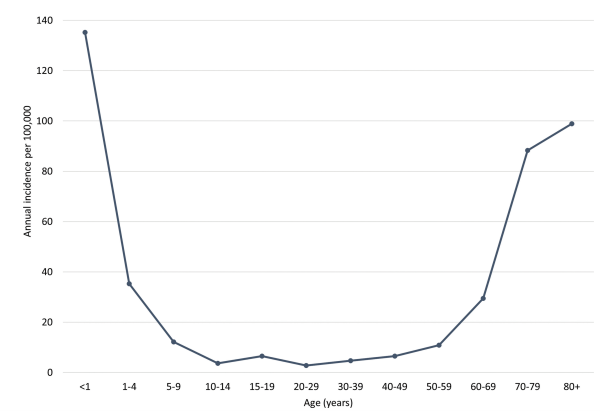

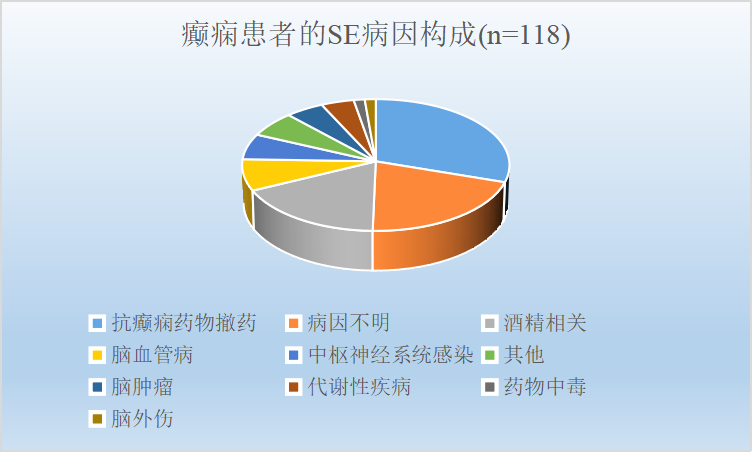
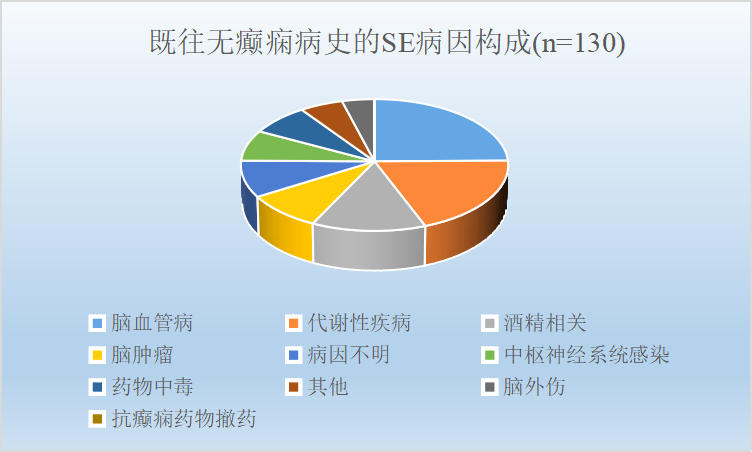
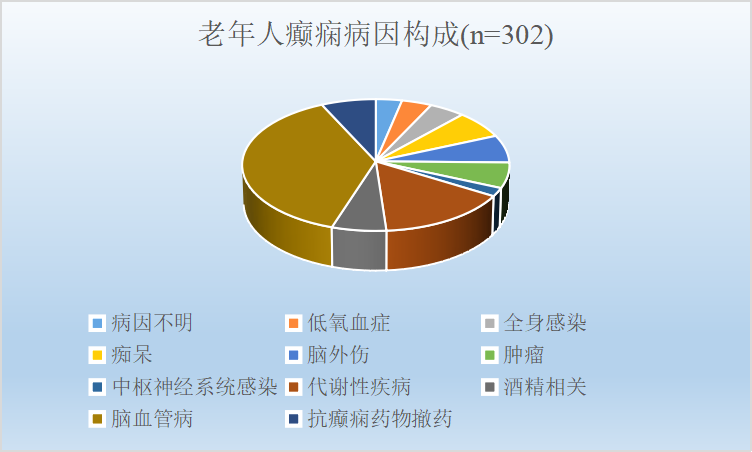
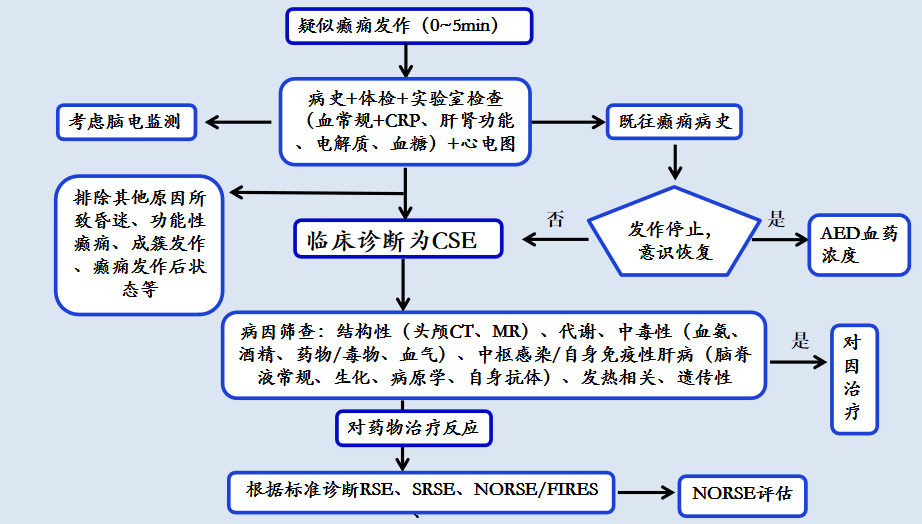

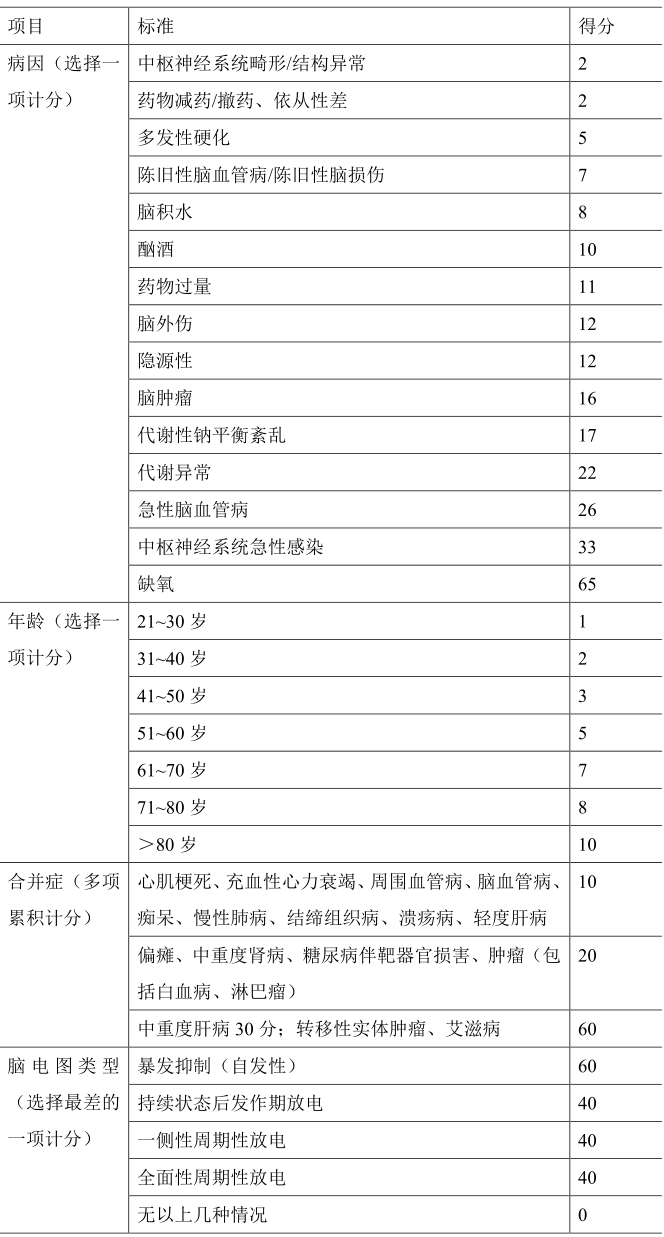



 长按文字
长按文字